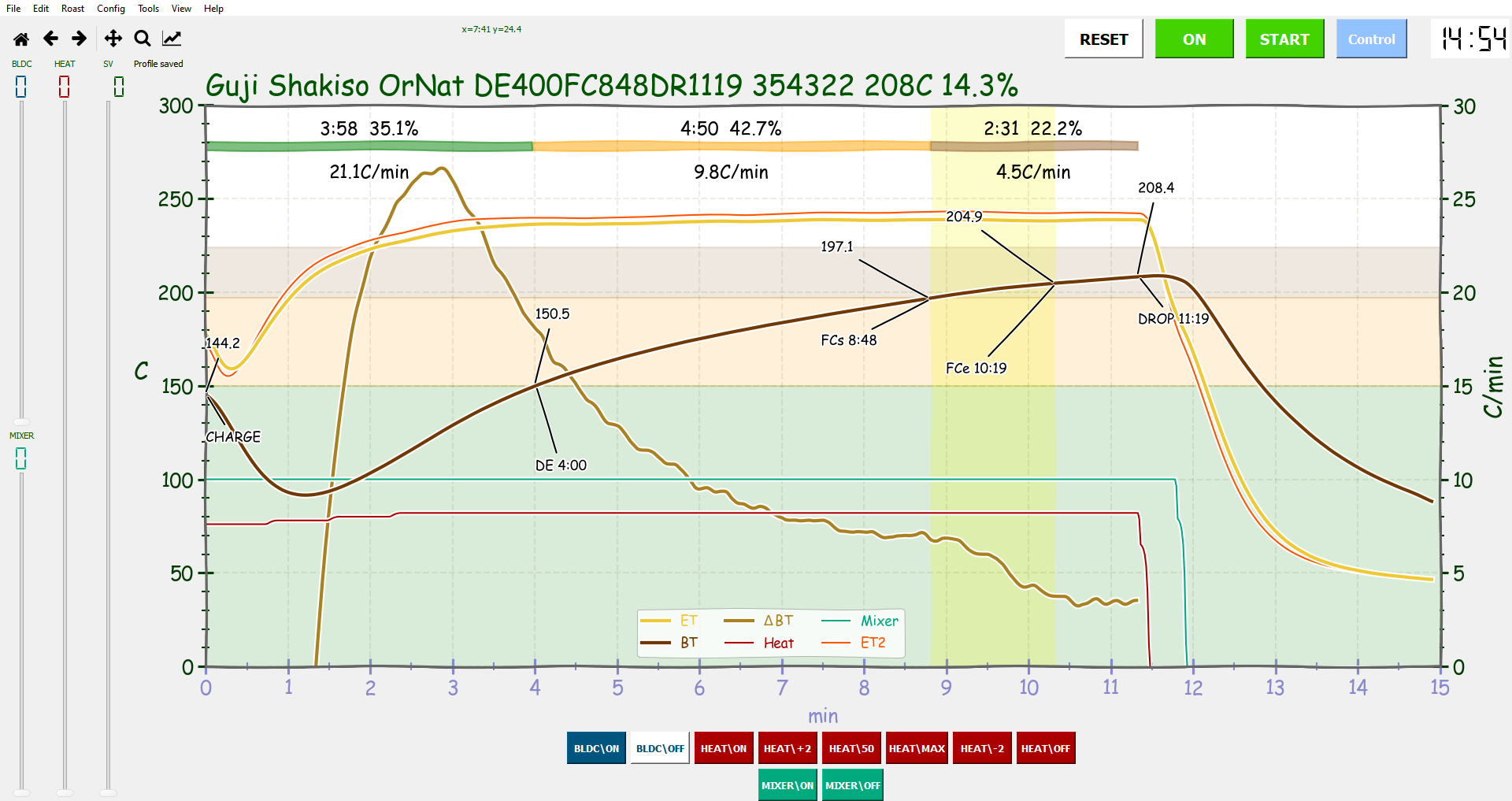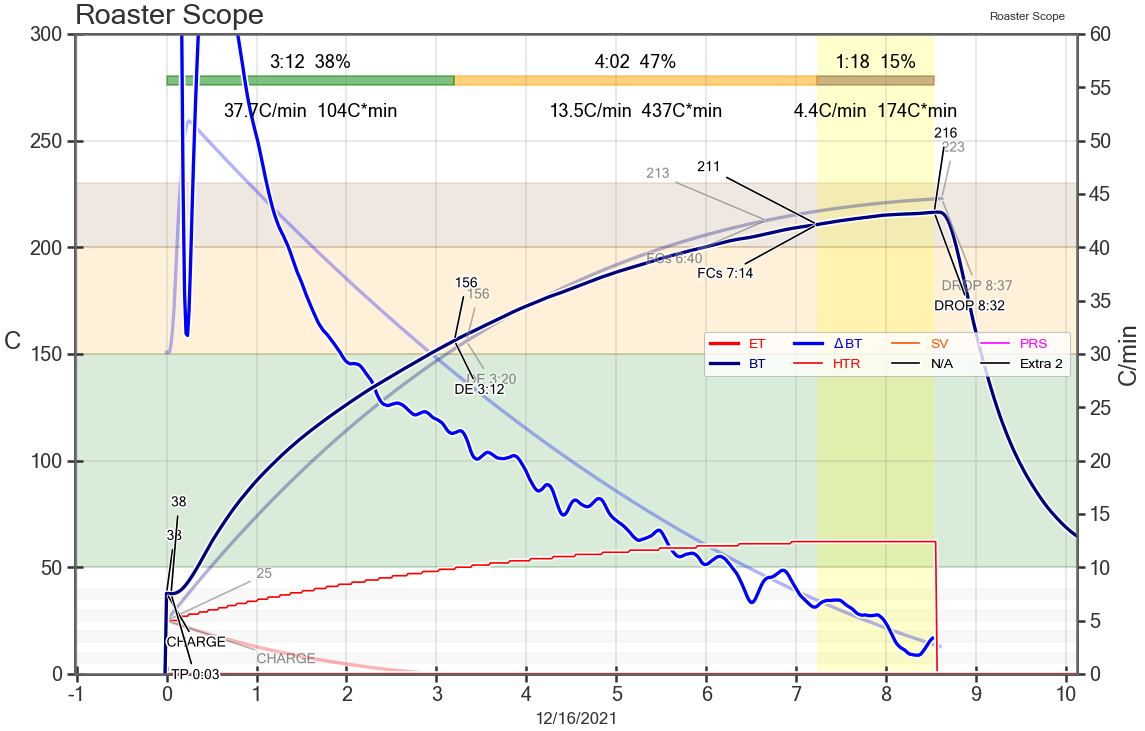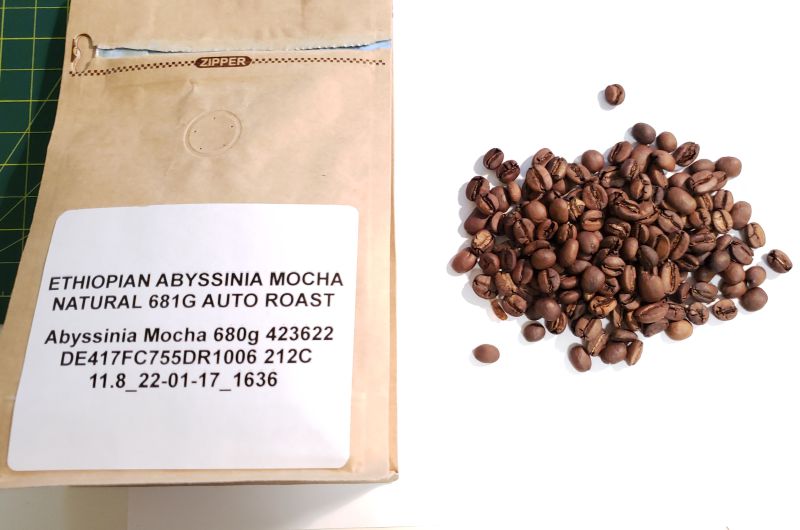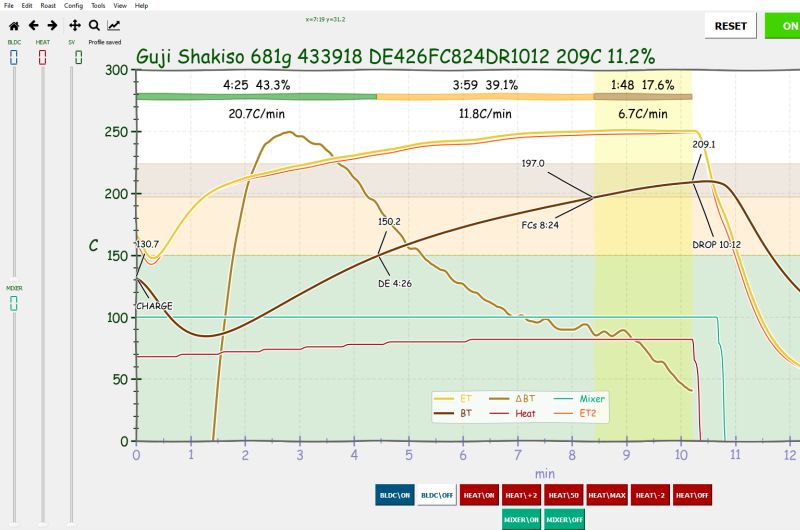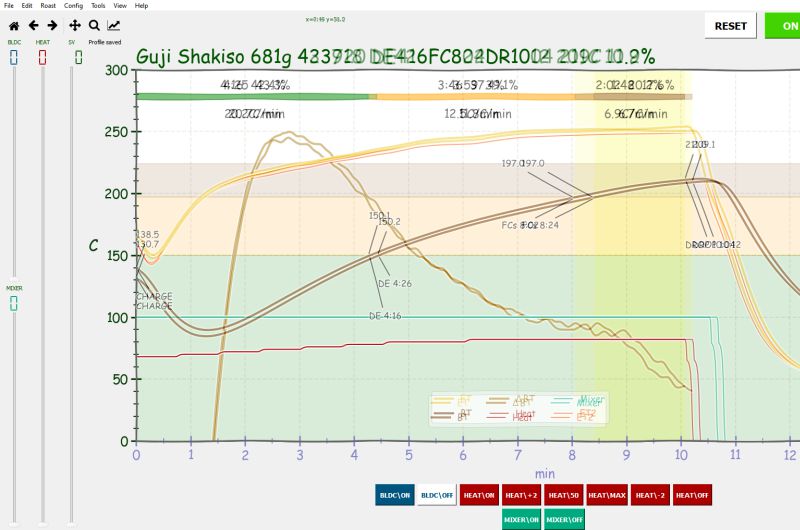
Login
Shoutbox
You must login to post a message.
renatoa
07/26/2024 3:49 PM
Bill grubbe and Jk, 

allenb
07/26/2024 5:15 AM
Spiderkw Welcome to HRO!


renatoa
07/24/2024 8:31 AM
ramiroflores and John123,

 ?
?

 ?
?renatoa
07/21/2024 1:18 AM
 , Luislobo
, Luisloborenatoa
07/19/2024 11:28 AM
Koepea, 

Forum Threads
Newest Threads
Skywalker roaster modsBackground Roast Iss...
Hello from Arkansas
TC4ESP
Green coffee reviews
Hottest Threads
| Skywalker roaster... | [375] |
| TC4ESP | [115] |
| War on Farmers by... | [47] |
| Adventures in flu... | [26] |
| Hello! (soon) Roa... | [17] |
Donations
Latest Donations
dmccallum - 10.00
JackH - 25.00
snwcmpr - 10.00
Anonymous - 2.00
Anonymous - 5.00
dmccallum - 10.00
JackH - 25.00
snwcmpr - 10.00
Anonymous - 2.00
Anonymous - 5.00
Users Online
Guests Online: 6
Members Online: 0
Total Members: 8,393
Newest Member: Bill grubbe
Members Online: 0
Total Members: 8,393
Newest Member: Bill grubbe
View Thread
Who is here? 1 guest(s)
Page 1 of 2: 12
|
|
Understanding the Curve
|
|
| CK |
Posted on 01/13/2022 1:59 PM
|
|
1/2 Pounder  Posts: 252 Joined: December 07, 2018 |
Are there any roasters who want to share their experiences with profile roasting? This curve is open to discussion on how to make a better tasting coffee. What would you do to adjust this profile to improve or change the end flavour? As it is, it's pretty nice when brewed as a filter coffee... this roast had berry and dark chocolate notes for about 2 weeks before starting to fade. The new hot air drum machine I'm using is very nimble with low thermal inertia and can be controlled like a fluidbed... Does anyone have suggestions on what could make this coffee sweeter, more complex, etc?
CK attached the following image:
|
|
|
|
| allenb |
Posted on 01/13/2022 7:10 PM
|
|
Administrator  Posts: 3869 Joined: February 23, 2010 |
Have you posted photos of your convection style drum roaster? I'd love to take a look at it. One thing I would try is stretch end of drying by one minute. Second thing is to reduce time from 1st crack to end of roast by a minute. This seems counter intuitive since many suggest stretching this phase to increase sweetness but with some coffees, it's just the opposite. Worth giving each of these a try one at a time. 1/2 lb and 1 lb drum, Siemens Sirocco fluidbed, presspot, chemex, cajun biggin brewer from the backwoods of Louisiana
|
|
|
|
| renatoa |
Posted on 01/14/2022 2:12 AM
|
|
Administrator  Posts: 3104 Joined: September 30, 2016 |
Short drying is probably due about the high charge and start power level, this is the most intriguing part of this roast approach. For my mixed convection/radiant machine, done using a TO as heater, the preheat to 170+/-10 degrees stabilize at a power value in the 30-40% ballpark. Here I see the first point that make me wonder... why only 144C at charge, when the power is at 75%... then next minute, with almost no change in power you reach 200C ET, performance that I was capable only with a FB design. The only answer I can give to myself is that you charge without waiting heat stabilize. Probably when you see 150 or so on the increasing temperature ramp, you push the charge lever. More on power management handling on my machine, that replicate the routine I seen on others. The power level of preheat is keep unchanged the first 30 seconds of charge, (soaking) then start increase slowly until TP, about minute 1, then increase faster, reaching 70-75% in the minute 3. So at minute 3 our machines have similar power levels, but 200C ET is touched later on mine, about minute 4-6, compared to yours, almost fluid bed dynamics, as you specified... DE happens about minute 5 for me. Back to thread subject: will this drying approach influence the taste? No idea... just try and see if a milder power curve for drying make a difference. For mine, charging at 75% will led to roast defects, too much heat too fast. That's because 75% for me means more than 250C, if let machine stabilize, which is too much heat to attack the greens. Agree with Allen to short the development, try next roast under 2 minutes, or 15-20% DTR The flattening of RoR at FCe, 10:19, it's a sign you should cut there, for my roasts there is no development past FC end. |
|
|
|
| CK |
Posted on 01/14/2022 1:39 PM
|
|
1/2 Pounder  Posts: 252 Joined: December 07, 2018 |
Quote allenb wrote: Have you posted photos of your convection style drum roaster? I'd love to take a look at it. No, nothing posted anywhere yet. Perhaps in the near future this roaster design will be shared... Quote allenb wrote: One thing I would try is stretch end of drying by one minute. Second thing is to reduce time from 1st crack to end of roast by a minute. This seems counter intuitive since many suggest stretching this phase to increase sweetness but with some coffees, it's just the opposite. Worth giving each of these a try one at a time. Thanks for the comments Allen, I'll run a roast with the suggestion and report back or post results. I am concerned about dropping 1 minute earlier because the bean temperature at drop will be lower than I'm used to... Maybe it will be a pleasant fruity surprise. |
|
|
|
| CK |
Posted on 01/14/2022 1:51 PM
|
|
1/2 Pounder  Posts: 252 Joined: December 07, 2018 |
Quote renatoa wrote: Short drying is probably due about the high charge and start power level, this is the most intriguing part of this roast approach. I'm still learning to drive this machine. Quote renatoa wrote: Here I see the first point that make me wonder... why only 144C at charge, when the power is at 75%... then next minute, with almost no change in power you reach 200C ET, performance that I was capable only with a FB design. This machine at it's heart is a FB design. That is why the TC response is fast and immediate on the profile. When charging with 680 grams greens, a fast temperature increase is needed to make the profile achievable in 12-14 minutes. With more greens at charge, the more initial heat required to meet the time markers. Quote renatoa wrote: DE happens about minute 5 for me. Agree with Allen to short the development, try next roast under 2 minutes, or 15-20% DTR The flattening of RoR at FCe, 10:19, it's a sign you should cut there, for my roasts there is no development past FC end. I'll change the power settings for charge and stretch the DE to about 5+ minutes and drop as suggested... stay tuned for the results.  |
|
|
|
| renatoa |
Posted on 01/14/2022 2:44 PM
|
|
Administrator  Posts: 3104 Joined: September 30, 2016 |
However... if this machine has indeed a FB heart and soul, I mean convection on steroids, then maybe we should change our minds and treat as a FB, with shorter times for all phases... thinking to something as in the attached image ...
renatoa attached the following image:
|
|
|
|
| CK |
Posted on 01/14/2022 7:59 PM
|
|
1/2 Pounder  Posts: 252 Joined: December 07, 2018 |
Quote renatoa wrote: However... if this machine has indeed a FB heart and soul, I mean convection on steroids, then maybe we should change our minds and treat as a FB, with shorter times for all phases... thinking to something as in the attached image ... Thanks Renato, The times are relevant to the machine's design, power, and heat transfer potential to the beans. It's more efficient than a FB, but like all machines, it has limitations and preferred sweet spots. With a lower green bean charge weight or increased roast chamber temperature, yes it could be possible to shorten the curve. In my posted curve you see a 680 grams charge being roasted with max power capped at 82% (1600w x 0.82 = 1312 x 2 heaters = 2624w). I try keeping the MET 250C or less. This profile works similarly for 908 grams charge, but I'm practicing using 680 until I learn the response of the machine. I'll adjust the profile as mentioned and report back on the results... Understanding the Curve. |
|
|
|
| allenb |
Posted on 01/15/2022 5:47 AM
|
|
Administrator  Posts: 3869 Joined: February 23, 2010 |
Renatoa makes a good point on possibly needing a totally different approach if your roaster is fully convection but this depends on if you are using a wire or perforated drum with very little thermal mass and 90% of the heat transfer being delivered solely by air to bean and not air to solid drum and traveling back around through the back plate to the beans. If this is the case and you do end up having the needed headroom in the power department then definitely experiment with the shorter profiles as renatoa mentioned. As far as the often mentioned best practice max recommended ET of 260 c (500 F), don't worry about exceeding this temperature. Most large commercial fluidbed roasters regularly hit the 290s with no roasting defects at all and remarkable cupping scores. 1/2 lb and 1 lb drum, Siemens Sirocco fluidbed, presspot, chemex, cajun biggin brewer from the backwoods of Louisiana
|
|
|
|
| CK |
Posted on 01/17/2022 5:35 PM
|
|
1/2 Pounder  Posts: 252 Joined: December 07, 2018 |
Here is one of two roasts completed today with a new power profile. No PID, just a natural power curve as Renato often mentions. I didn't quite get the recommended times, but the next round should be better... it'll be trial and error to get the power settings just right and learn the thermal characteristics of the machine, but it does look promising. The roasts today were shorter as intended, but with a slightly higher drop temperature. The beans retained about 1% extra moisture and goodness inside compared to the longer roasts of 12+ minutes. Looking forward to trying them in about 5 days...
CK attached the following image:
|
|
|
|
| renatoa |
Posted on 01/18/2022 2:19 AM
|
|
Administrator  Posts: 3104 Joined: September 30, 2016 |
This is a curve I like ! Still too long development, for me, especially with that high average RoR, but depends on your taste, how acid/chocolate balance you prefer. Seen such high RoR values at FC in nordic roasts only, but they have very short dev times, about one minute, to compensate the higher energy. But the nordic shool roasts have very different goals than what most people defines as "coffee"  Next roast I would keep the first phase, but lower the heat at the end, to have about 7 RoR when entering FC, and an average close to 5 for the Dev phase. And development shorter than 2 min/20% I am cupping mine next three hours after roast, definitely same day. You are losing flavors waiting so long, I feel them gone since day three. Drinking mainly brew though... Very good progress, bravo ! Edited by renatoa on 01/18/2022 2:35 AM |
|
|
|
| allenb |
Posted on 01/20/2022 5:17 PM
|
|
Administrator  Posts: 3869 Joined: February 23, 2010 |
Quote Next roast I would keep the first phase, but lower the heat at the end, to have about 7 RoR when entering FC, and an average close to 5 for the Dev phase. And development shorter than 2 min/20% CK, what was the outcome of this roast? Very light, light, medium or darker than medium? If very light, then there will be no way to stay under 2 min development and at the same time reduce RoR. 1/2 lb and 1 lb drum, Siemens Sirocco fluidbed, presspot, chemex, cajun biggin brewer from the backwoods of Louisiana
|
|
|
|
| CK |
Posted on 01/20/2022 6:24 PM
|
|
1/2 Pounder  Posts: 252 Joined: December 07, 2018 |
Quote allenb wrote: CK, what was the outcome of this roast? Very light, light, medium or darker than medium? If very light, then there will be no way to stay under 2 min development and at the same time reduce RoR. For me, it is a medium roast. Today, day 3, it has a prominent cocoa flavour, low acidity, low sweetness, med-full body with a syrupy long hanging finish on the palate... Here is an image of the results. (Please keep in mind that colour rendition of photographs from white balance settings, lighting, and your monitor's colour calibration, may cause the image to appear off.)
CK attached the following image:
|
|
|
|
| renatoa |
Posted on 01/21/2022 1:37 AM
|
|
Administrator  Posts: 3104 Joined: September 30, 2016 |
Now is probably too late, but weight loss of the roast tell me some additional things to the color and other sensory hints. Medium is when the loss is about 14%. Light is in the 12% ballpark. |
|
|
|
| louca |
Posted on 01/22/2022 2:17 PM
|
|
Newbie  Posts: 15 Joined: September 17, 2010 |
But isn't weight loss somewhat dependent on the starting moisture content of the bean? Or not? I really wanna know.
����������
Aillio R1 V2 Bullet, Behmor 2000AB+, Fellow Ode grinder, Escali L-600 scale, V60-02. "I feel more like I do now than I did when I got here." |
|
|
|
| renatoa |
Posted on 01/23/2022 3:11 AM
|
|
Administrator  Posts: 3104 Joined: September 30, 2016 |
Yes, it is, the numbers above are for well stored green, in the first year of crop. I.e. about 10-11% moisture. You can read in the literature about higher figures, like 12%, but this is really fresh crop... the first three months after import, which usually aren't available to us. If this is really important, you can buy a moisture meter, about $200, or ask the seller, if he can measure this for you, just before packing. |
|
|
|
| CK |
Posted on 01/24/2022 12:12 PM
|
|
1/2 Pounder  Posts: 252 Joined: December 07, 2018 |
Here is a 10x recording of the Artisan workflow for the above roast in post #9. It was the second roast, back to back, so the machine carried more thermal inertia into this batch. The previous roast data is seen in the title because I hadn't changed it yet, so you see the first roast on this profile was dropped at 10m22s at 210C, whereas this one finished at 10m6s and 212C. |
|
|
|
| CK |
Posted on 01/31/2022 6:53 PM
|
|
1/2 Pounder  Posts: 252 Joined: December 07, 2018 |
Here's a modified power profile that tries to get better numbers... I actually ran 2 batches back to back, and below are the resultant curves individually, and also how they look when overlaid one over the other. I've cupped both these today (rested 4 days) and the flavour is wonderful. I describe it as a third-wave style light roast, clean with light fruity acidity, chocolate, long finish with a creamy velvet-like body... prepared using an Aeropress. Thank you for the advice to make the adjustments that yielded good results. 
CK attached the following images:
Edited by CK on 02/02/2022 8:52 PM |
|
|
|
| allenb |
Posted on 02/03/2022 9:31 AM
|
|
Administrator  Posts: 3869 Joined: February 23, 2010 |
Great to hear the new profiles are yielding good results! Obviously there's no one size fits all with all of the different green variables but hopefully the basic new shape will only need some small tweaks to be useful for everything you'll be roasting.
1/2 lb and 1 lb drum, Siemens Sirocco fluidbed, presspot, chemex, cajun biggin brewer from the backwoods of Louisiana
|
|
|
|
| renatoa |
Posted on 01/07/2023 8:18 AM
|
|
Administrator  Posts: 3104 Joined: September 30, 2016 |
Ready for a religious war ?  For those not so happy to watch a long video, as me... especially a video where 42 minutes NOTHING happens other than that guy talking... well, there is a transcript, which could be easier to browse and pick key ideas. https://coffee-mi...m/podcast/ Ready for stonewalling ?  |
|
|
|
| allenb |
Posted on 01/07/2023 7:59 PM
|
|
Administrator  Posts: 3869 Joined: February 23, 2010 |
I gave some of the podcasts a listen. I'm in agreement with many of their conclusions. I've recently come to the same realization as they, that stretching the development phase at a slower rate of rise does not increase body and/or sweetness and have found, as they have, that the reverse can sometimes be true. They, and I also, have found more enhanced fruit and spice notes from a hotter and faster development phase. "Why Rate of Rise is a bad reference point for optimizing flavour in coffee roasting" I also agree with their point that most people (including me before now) put way too much emphasis on achieving a perfect RoR curve and not deviating from the smoothly descending curve. As they have determined in large cupping evaluations, small to medium deviations will not end up being noticed in the cup. Edited by allenb on 01/07/2023 8:45 PM 1/2 lb and 1 lb drum, Siemens Sirocco fluidbed, presspot, chemex, cajun biggin brewer from the backwoods of Louisiana
|
|
|
|
| oldgrumpus |
Posted on 01/10/2023 8:57 AM
|
|
1/2 Pounder  Posts: 225 Joined: July 25, 2012 |
Renatoa, thanks for posting this information in the video and podcast series! I’ve had a chance to listen to five or six of them so far. It’s interesting that he takes a much more technical and scientific as well as provable approach. I also appreciate that he isn’t obsessing about the rate of rise. It couldn’t have come at a better time for me! I’ve become quite frustrated with trying to get things right and only noticing minimal or no improvement. I am very ready to ditch the whole declining rate of rise theory and continue with something much simpler with proven results. He hooked me when he said that one can achieve just about any roast curve with three burner settings. Although his presentations are highly technical and over the heads of most, there is still much that can be gleaned!
Clever Coffee Dripper
Grinder: Macap M4 Roaster: Completed drum roaster project photos shown here: Photos https://goo.gl/ph...Da6K4wfqw5 Videos https://www.youtu...Bd1NrdpSUH Build thread https://homeroast...post_38189 |
|
|
|
| allenb |
Posted on 01/11/2023 9:06 AM
|
|
Administrator  Posts: 3869 Joined: February 23, 2010 |
Here's something from Scott back in 2020 that he put together due to lots of negative criticism about his statements about descending rate of rise. I think he makes a lot of good points that I also agree with. I think one needs to understand that Scott's claims about descending RoR were not about an approach to roasting that he claimed to have invented, but instead was him simply publishing his findings from interviews with many roasters which showed that there was a correlation between smooth descending RoR and better cupping scores. He also clears up additional negative criticism made about him on other areas of the roast process. https://www.scott...ndamentals 1/2 lb and 1 lb drum, Siemens Sirocco fluidbed, presspot, chemex, cajun biggin brewer from the backwoods of Louisiana
|
|
|
|
| oldgrumpus |
Posted on 01/11/2023 11:55 AM
|
|
1/2 Pounder  Posts: 225 Joined: July 25, 2012 |
Allen, I read the article that you posted above. And there isn’t much to disagree with. I too have come across the same information in an interview that Scott Rao gave somewhere where he said that he, after looking at thousands of roast logs, and cupping coffee from those roasts, saw a correlation between a descending rate of rise and a percentage in development between 20 and 25%, that in his professional opinion, was where many of them cupped well. He also said in the article you posted that roasters who have succeeded in truly mastering the smooth declining rate of rise curve are more satisfied with their roasts. I think for me the issue is whether or not these changes can be detected by the person drinking the coffee that isn’t trained or knowledgeable in cupping? If I bring my coffee loving friend over and serve him batches from a coffee that has everything right on the curve, and some coffee from a different batch where things are slightly different and not perfect, how much difference will he actually detect? If he sects a difference, will it be interpreted as a negative difference? That is my point and if I’m not mistaken, is the point of Coffeemind (Morten Münchow). This is (hopefully) not a holy war, but some concepts on both sides worthy of consideration. Clever Coffee Dripper
Grinder: Macap M4 Roaster: Completed drum roaster project photos shown here: Photos https://goo.gl/ph...Da6K4wfqw5 Videos https://www.youtu...Bd1NrdpSUH Build thread https://homeroast...post_38189 |
|
|
|
| exer31337 |
Posted on 01/12/2023 6:07 PM
|
|
Newbie  Posts: 49 Joined: September 12, 2022 |
There was a post of a formula that I can't find. The CoffeeMind approach of ET control sounds much easier to experiment with vs roasting based on the outcome of the ET (ror). Someone posted a formula to create the desired roast profile based on ET, I was wondering if someone had a link to it, or a better way to plan the roast curve based on ET... Also does the roast temp matter for each phase such as dry etc? I've seen other post claiming a low dry phase is best? Coffee mind makes it sound like all that will matter is the Development, and the temps determine what you will be able to do in dev time while keeping the same roast level. In my experiments with radically lower Dev time I get vegetable flavors... BUT I didn't control all other factors and didn't check the roast level, just went off of dev time after first crack... so it could very well have just been an underdeveloped roast. Anyways trying to find a way to plan my roast profile and Dev time with specific ET targets. Thanks. |
|
|
|
| oldgrumpus |
Posted on 01/12/2023 6:40 PM
|
|
1/2 Pounder  Posts: 225 Joined: July 25, 2012 |
I don't pretend to know the answers to those questions, but speaking as one who has attempted with some success and some disappointments after roasting for a couple of years (another way of saying there are many here more qualified), that... A good way of learning quickly is to learn from the experts. If you are technically inclined and don't mind being instructed in an online class designed for beginning professional roasters, then I would recommend paying the 30 Euros, (about $32 USD) and learning from CoffeeMind Academy. I just started it today and it will answer the questions you're asking. The same principles apply to hobby roasters and you'll learn a lot other cool stuff about coffee, like for instance, how to choose a green coffee origin which likely represents the flavors you're after. https://coffee-mi...gn-basics/ Clever Coffee Dripper
Grinder: Macap M4 Roaster: Completed drum roaster project photos shown here: Photos https://goo.gl/ph...Da6K4wfqw5 Videos https://www.youtu...Bd1NrdpSUH Build thread https://homeroast...post_38189 |
|
|
|
Page 1 of 2: 12
| Jump to Forum: |
Powered by PHP-Fusion Copyright © 2024 PHP-Fusion Inc
Released as free software without warranties under GNU Affero GPL v3
Designed with ♥ by NetriXHosted by skpacman




